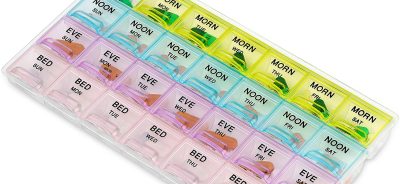Blog Post
Digital hearing aids vs. analog hearing aids: which is better for you?
With technological upgrades, we all look forward to replacing our devices with the latest, updated ones available. We might not even understand the difference, but we all like to invest in things that enhance our comfort. Similarly, most people debate the usefulness of digital hearing aids. But before you spend hundreds on a digital device, knowing what makes a difference is essential!
Analog devices are easy for most people but using premium digital hearing aids has many benefits that analog hearing aids can never provide. Here is the difference between the two, and we’ll tell you why you should consider investing in digital hearing aids!
What makes a difference?
1. Amplifier: An amplifier makes a huge difference in an analog or digital device. Amplifiers increase the volume of sound frequencies, helping you hear sounds comfortably. Analog amplifiers focus on higher frequencies, between 2000 and 8000 Hz.
Digital amplifiers are small computers that sophisticatedly cut out background noise, help you focus on sounds you want to hear, and reduce feedback. Premium digital hearing aids provide the cleanest sound quality in different environments.
2. Feedback management: in an analog hearing aid, you’ll hear a squealing noise while inserting the device if it’s turned on. You may hear whistling if the device’s tip moves into different positions.
Digital hearing aids have advanced feedback cancellation technology. This technology detects and removes the whistling noise before it reaches your ears. It does not produce any feedback squeals or whistling noise even when the tip moves, making it better than analog hearing aids.
3. Microphones: analog hearing aids have single omnidirectional or directional microphones. Depending on the device model, some devices may have both of these features. Digital hearing aids have both of these microphones in a single machine, and they have a button so you can choose which one to use.
With the latest technology, some hearing aids can choose between two microphones or find the best way to use them to get the cleanest sound.
4. Filtering background noise: analog hearing aids cannot filter out background noise. On the other hand, digital devices are made to filter out the noise and help you focus on what you want to hear. These are built with features to automatically cut down background noise and amplify sounds you want to hear.
When there is a lot of noise, it is hard and uncomfortable to use analog hearing aids, but digital hearing aids are comfortable in all situations. Digital devices have Bluetooth connectivity, giving them an advantage over analog devices.
Conclusion
Before you buy a hearing aid, consult your audiologist, and seek their recommendations. Digital hearing aids are more expensive than analog hearing aids, but they are worth the money. Investing in a good quality hearing aid with the latest technology will be more comfortable and easier to use daily.
A digital device’s features are unbeatable and considering they will prevent further hearing loss as much as possible; you should invest in a digital hearing aid. Analog hearing aids are outdated devices, and in today’s world, nothing can beat the benefits of modern technology.




























